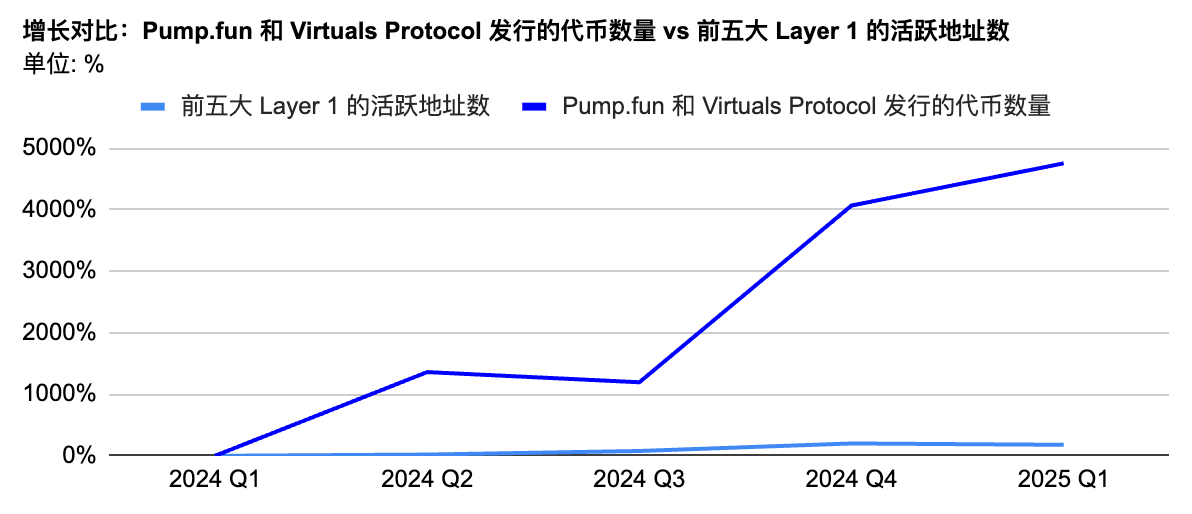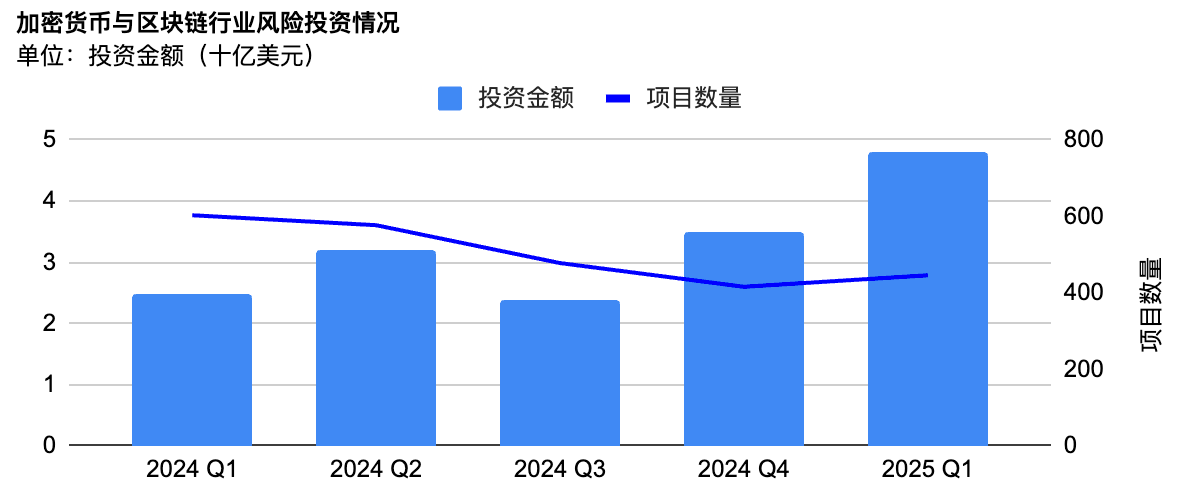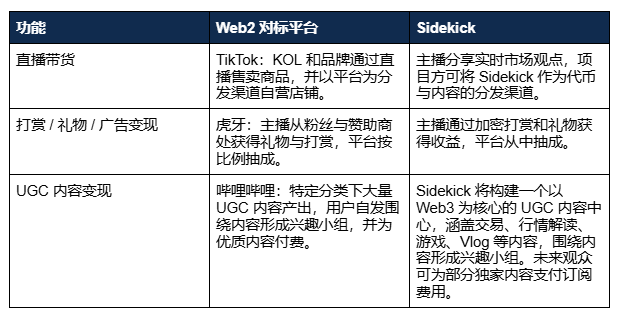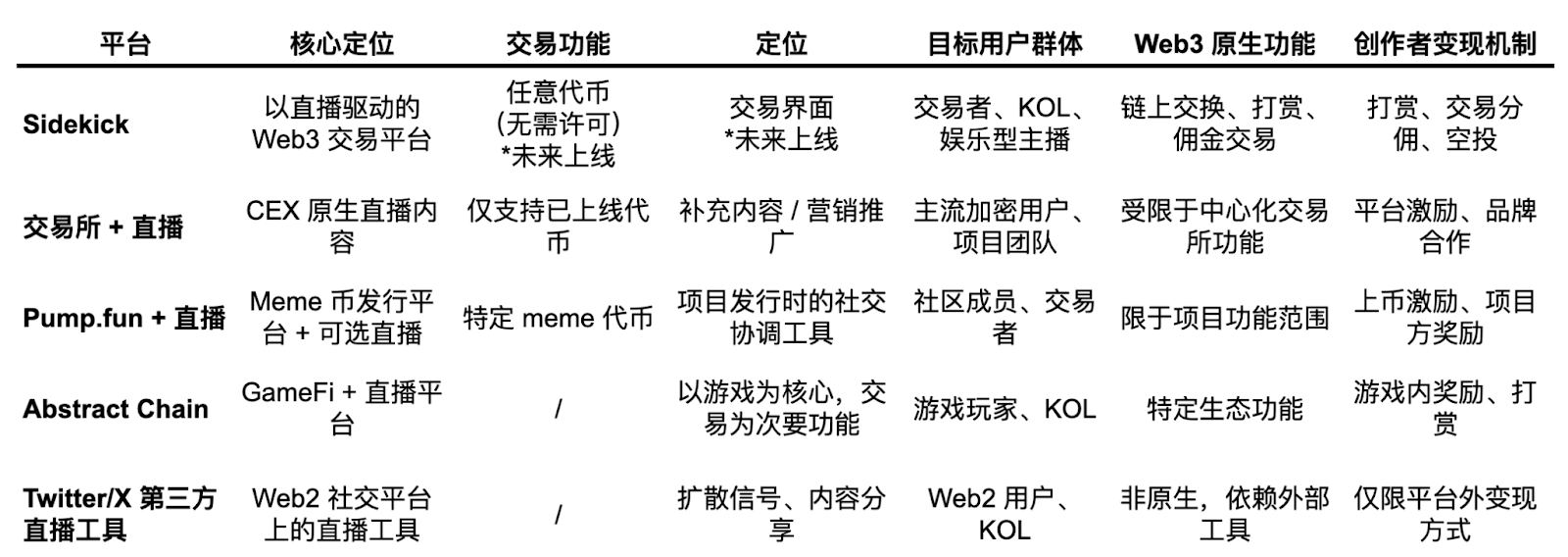Sidekick, Building LiveFi Infrastructure for Real-time Trading
Reposted Original Title: “Animoca Research: Sidekick—Building Real-Time Trading LiveFi Infrastructure”
TL; DR
- Sidekick is a native Web3 livestreaming platform that fuses TikTok-style content feeds, advanced monetization mechanisms reminiscent of Huya, and on-chain transaction execution. During live streams, users can tip, participate in airdrops, and creators act as real-time asset distributors.
- As competition intensifies in the crypto attention economy, the effectiveness of marketing tweets and leaderboard campaigns is diminishing. Livestreaming, on the other hand, fosters deeper trust and boasts higher conversion rates, making it a powerful tool for building credibility and visibility for meme coins and VC-backed projects.
- The platform has already achieved early momentum in Asia, attracting over 1,000 KOLs dedicated to livestreaming. Sidekick plans to expand content verticals and incentivize even greater community participation.
- The team mainly comprises Web2 veterans with strong backgrounds in livestreaming and global expansion. Sidekick was selected for BNB Chain’s Season 7 MVB Accelerator, with backing from YZi Labs, Altos Ventures, Fenbushi Capital, and Hashkey Capital. They also partner with Solana Foundation, Base, and OKX Wallet, and are part of the Google Cloud Web3 Startup Program.
- Looking ahead, Sidekick could evolve beyond a livestream platform to become a modular infrastructure layer—driving a wide range of on-chain activities via real-time content and establishing itself as a core operational component for Web3 projects.
Why Livestreaming Is Essential for Web3 Marketing
Sidekick is a Web3-first content platform built around livestreaming, providing a range of content, from market commentary to blockchain gaming. By integrating “livestream e-commerce” concepts into crypto, it’s laying the foundation for LiveFi—creating a unified space for KOLs, traders, and projects to engage in real time.
The surge of Web3 livestreaming is no accident—it’s a response to persistent inefficiencies in crypto marketing and an increasingly saturated attention market.

Starting in Q1 2024, platforms like Pump.fun, BONK’s LetsBonk, and Raydium Launchpad have dramatically lowered the bar for token launches. AI-powered smart tokens are accelerating this trend. Token issuance has skyrocketed by more than 50x since early 2024, while active wallets on top Layer 1 blockchains have doubled. However, token exposure mechanisms have not kept pace—making it harder for early-stage projects to get noticed.

On the institutional side, from Q1 2024 through Q1 2025, VC investment in crypto keeps climbing—but is increasingly concentrated in a handful of “star” projects. These projects, in turn, face mounting pressure for visibility due to their high valuations and liquidity requirements.
Against this backdrop, efficient content distribution and clear communication have grown ever more vital. It’s not enough for projects to have a great product—they must win the battle for attention. According to Sidekick founder Jonny, a project’s success is increasingly defined by its ability to capture attention early, not just its fundamentals.
Among available channels, key opinion leaders (KOLs) are the prime drivers of project awareness. Yet while agencies can help connect projects with superstar KOLs, these partnerships are expensive and their reach is limited. The question, then, is how can projects engage and activate mid-tier KOLs to boost marketing ROI?
Many InfoFi platforms attempt to solve this via leaderboard-based airdrop mechanisms—projects distribute airdrops based on virality on Twitter/X. This does encourage broader participation and motivates mid-tier KOLs to create, but it also fosters uniformity: KOLs tend to push similar, repetitive content, leading to audience fatigue and diminishing returns.
So the challenge is: How can projects—especially startups—stand out amid noise, quickly build trust, and consistently deliver differentiated content?
Livestreaming offers several structural advantages for Web3 promotion. Unlike static posts or pre-recorded videos, livestreams offer real-time, unscripted creator-viewer engagement. This dynamic, transparent dialogue lets viewers assess not just the content, but also creators’ behavior, intent, and trustworthiness—precisely the elements that powered the rise of livestream e-commerce in Web2. In 2023, China’s livestream e-commerce GMV surpassed $690 billion, and similar models are gaining traction in the West.
Web3 is characterized by information asymmetry and high trust costs, making livestreaming an effective tool for reducing uncertainty and building trust.
Demographics also favor livestreaming: About 60% of global crypto users are 25–44 years old, the same demographic that comprises nearly 50% of Twitch’s user base. That cultural overlap means crypto users are already primed for livestream content.
Adoption is accelerating: In 2024, Pump.fun added livestream capabilities so creators can present tokens live. Twitch’s “Crypto” category draws over 4,600 daily viewers—putting it alongside heavyweights like NBA 2K25 and Call of Duty.
Functionally, livestreaming also maps closely to how users discover projects. Sidekick outlines a typical five-step discovery journey:
- A token contract address is shared in Telegram or Discord groups;
- It’s discussed in private circles;
- A KOL recommends it to their followers on the platform;
- It picks up wider traction on X (formerly Twitter);
- Ultimately, it increases trading volume.
This shows that trusted individuals play a critical role in communicating narratives, verifying legitimacy, and building initial trust. Livestreaming, as a real-time, interactive medium, is an effective catalyst for this process.
Sidekick: Turning Attention into Action
Sidekick is a livestream-powered crypto discovery platform, focused on real-time market analysis and project engagement. It’s built in response to key shifts in Web3 user behavior: attention scarcity, rapidly shifting narratives, and the increasing importance of trust as a key factor in user adoption.
By deeply integrating livestreams with trading tools, Sidekick fosters seamless, real-time interaction between projects, creators, and viewers—applying livestream e-commerce logic to the LiveFi environment and closely connecting narrative and community participation.
Platform Features
Sidekick’s “trust-to-action” feedback loop is rooted in product design, absorbing interactive mechanics from Web2 and pairing them with Web3 trading power. The platform incorporates features from TikTok, Huya, and Bilibili:
Creators generate live content; viewers can reward them via tips, gifts, ads, or even subscriptions—creating an interactive and highly monetizable content ecosystem.

Business Model
Sidekick supports streamers with two core monetization options: tips (virtual gifts) from viewers and a platform-funded creator incentive program.
Everyday users are also key. They watch streams, get market insights, participate in real-time chat, and can win rewards through in-app airdrop campaigns.
Project teams and advertisers form the third component, leveraging live AMAs, airdrops, and product placements to raise exposure and community engagement. Project teams may also partner with streamers to create content and leverage them as performance-based marketing channels.
As an infrastructure and matchmaking layer, Sidekick charges commissions to partner projects—similar to a broker’s fee.
Team Overview
Led by founder Jonny—who brings deep experience in gaming, live video, and investing—Sidekick taps talent from across Web2. Jonny’s career began at China’s largest internet café brand, Wanyoo, where he led European expansion, then moved on to found gaming companion platform Bixin, giving him a nuanced understanding of gamer behavior and livestream ecosystems.
Under Jonny, Sidekick participated in the BNB Chain MVB Accelerator (Season 7) and raised investment from YZi Labs, Altos Ventures, Fenbushi Capital, and Hashkey Capital. The platform also partners with Solana Foundation, Base, and OKX Wallet, and is a Google Cloud Web3 Startup Program participant.
Go-to-Market Strategy
Sidekick’s expansion follows three phases, each aimed at a distinct user and content segment:
Phase 1 focuses on crypto-native users, particularly those active in Chinese private groups that lack visibility on public platforms like X, with the goal of establishing a loyal user base.
Phase 2: Grow into broader entertainment creators. These are not just pro gamers, but also personalities who draw audiences with humor, storytelling, and emotional resonance. This approach helps boost engagement and retention.
Phase 3: Expand into new verticals. Sidekick does not intend to compete directly with major gaming streaming platforms like YouTube, Huya, or Douyu, which dominate IP rights and esports resources. Instead, Sidekick is carving out a niche in real-time crypto content, with greater agility to experiment with new creators, content, and monetization strategies.
This phased, community-driven approach is bearing fruit. Users are spontaneously adopting Sidekick-style avatars and producing educational content even without direct incentives, fueling a grassroots growth cycle that enhances engagement and loyalty.
The team remains actively engaged in crypto communities, actively trading meme coins and engaging in KOL groups to track the latest attention flows and narrative trends in real time.
Competitive Landscape

As livestreaming and crypto market analysis converge, the “LiveFi” sector is rapidly diversifying. Major product categories include: third-party livestream tools for Twitter/X; token launch platforms with livestream features (e.g., Pump.fun); gaming-integrated livestreams (e.g., Abstract Chain); and exchange-native livestream features (such as new offerings from Binance).
These approaches reveal different perspectives on livestreaming’s place in crypto:
- Third-party livestreaming tools for Twitter/X were first to market but lack Web3-native features like crypto-based tipping;
- Pump.fun’s livestreaming is designed to generate viral momentum for meme coin launches, with livestreams used mainly for amplification;
- Abstract Chain targets GameFi, with a focus on Western creators and users.
Fundamentally, most platforms still treat video content as a “marketing add-on” or “secondary layer.” Sidekick, however, places livestreaming at the core of the trading experience—integrating content creation, token trading, and community engagement, with built-in monetization tools like tipping and airdrop rewards, so both creators and viewers are deeply engaged in on-chain activity.
Meanwhile, exchanges like Binance are deploying livestream features but often limit them to tokens that have already launched. In contrast, Sidekick’s creators can livestream about any asset—whether it’s brand-new or an obscure niche coin—providing Sidekick with a competitive advantage in capturing emerging community trends and speculative cycles.
A recent example: A streamer live-broadcasted their journey trading a meme coin, culminating in a community takeover (CTO, referring to a transition where the community assumes project leadership). Viewers could watch each move in real time and join the discussion, providing a transparent and participatory experience.
In terms of regional presence, Sidekick has built a robust creator and user base among Chinese-speaking communities, signing over 1,000 KOLs specializing in livestreaming. This combination of broad content supply and strong creator loyalty provides Sidekick with a significant competitive advantage in attracting and retaining audiences.
Conclusion: LiveFi & Protocol Integration—The Next Phase
As the market evolves, Sidekick is steadily shifting from a content platform toward a Web3-native infrastructure layer. It’s not just an information channel, but a real-time discovery engine that closely links content with user actions. In this role, Sidekick is moving beyond “content layer” to become an “execution layer” that seamlessly converts viewing into on-chain activity.
Looking forward, Sidekick could expand into a growing array of on-chain use cases—token launches, IDO participation, whitelist registration, even lending. The platform will continue introducing modular components to support additional protocols and decentralized applications.
Just as livestreaming transformed e-commerce, Sidekick aims to bring about a similar transformation in the Web3 ecosystem.
Disclaimer:
- This article is republished from TechFlow, original title: “Animoca Research: Sidekick—Building Real-Time Trading LiveFi Infrastructure.” Copyright is held by the original author, TechFlow. For any concerns about republishing, please contact the Gate Learn Team.
- Disclaimer: The views and opinions expressed in this article are solely those of the author and do not constitute any form of investment advice.
- Other language versions are translated by the Gate Learn Team. Unless expressly authorized by Gate, reproduction or distribution of translated content without authorization is strictly prohibited.





